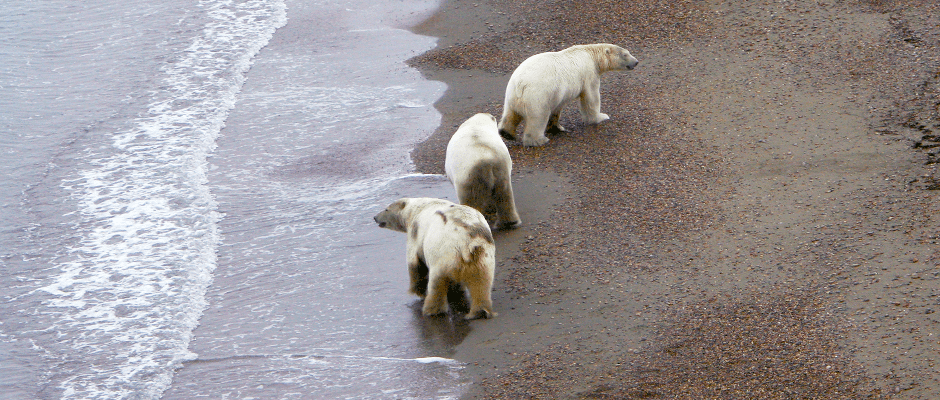Share this article
Polar Bears Spend a Month Longer on Land During Summer
Polar bears in the Chuchki Sea have been spending more and more time on land than they were a few decades ago, according to a new study.
“They are spending approximately 30 more days on land, which is pretty substantial in the summer,” said Karyn Rode, a research wildlife biologist with the Alaska Science Center of the U.S. Geological Survey and lead author of a new study published in PLOS ONE. “Where they come on land during the summer is changing because of the ice conditions.”
The researchers compared monitoring data from radio collars on female polar bear activity between 1986-1995 and 2008-2013. They looked at 103 bears during the first time period and 47 in the more recent period, and found that the bears monitored more recently spend a month longer on land, and nearly twice as many bears now spend their summers on land.
She said that so far this hasn’t had any kind of nutritional effect on the bears. There is some debate on whether polar bears will be able to sustain themselves on land-based food as they spend more time on land, and there is certainly some difference between polar bear populations. But Rode said that the tracking data she and other researchers looked at for the Chuchki Sea population showed that the bears spent more than 90 percent of their time on land resting.
“They’re either sitting, laying or standing. They aren’t moving around very much to forage,” she said. “When we look at this activity sensor, it’s incredibly low.”
She said that as the summer sea ice continues to increase, polar bears will presumably increase their amount of shore-time. This could be trouble. Other recent studies have shown that polar bears lack the ability to sustain themselves during extended periods of famine. Further implications for this, Rode said, include an increased likelihood of human-bear conflicts.
“The results of our study are consistent with studies in other regions where polar bears have experienced substantial sea ice loss. As sea ice loss occurs, polar bears increasingly use land habitats where they have minimal to no access to their marine mammal prey and are increasingly likely to interact with humans,” she said in a press release.
Header Image: Polar bears on coast of Southern Beaufort Sea. Image Credit: Mike Lockhart, USGS








